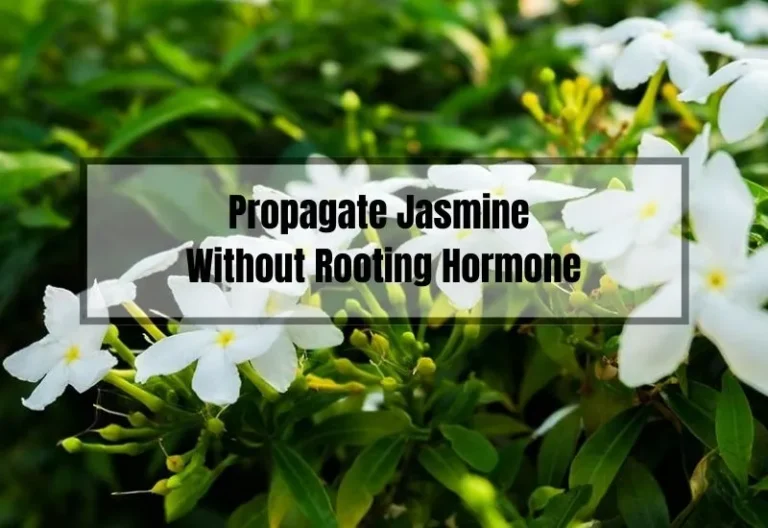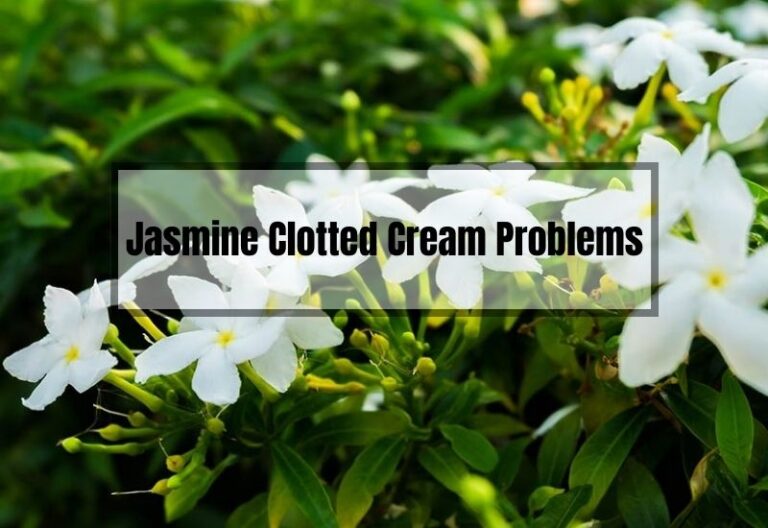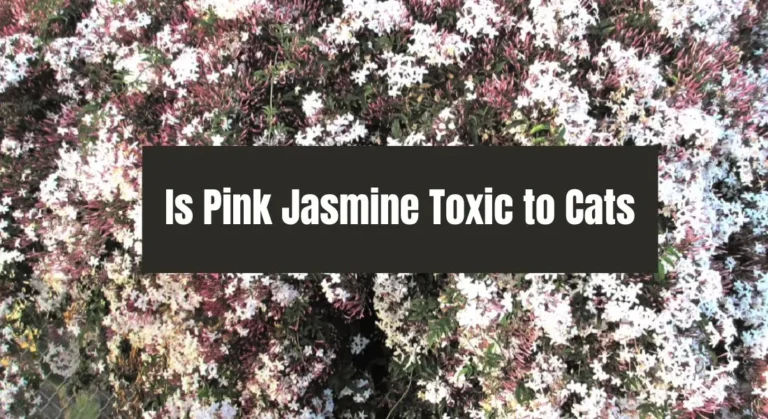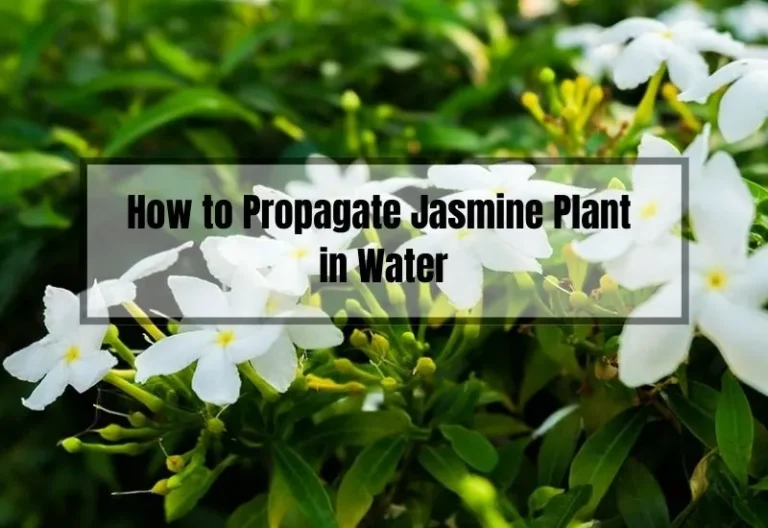Will Bleach Kill Jasmine? A Guide to Keeping Your Plants Safe
Now for the moment of truth: Will bleach kill jasmine plants? Unfortunately, the answer is yes.
However, bleach can be harmful to your beloved jasmine. Direct contact with bleach can cause discoloration, wilting, and even death in extreme cases. While it may effectively kill unwanted plants, it’s not recommended for jasmine care.
In this article, we’ll explore bleach’s effects on jasmine plants and offer alternative solutions for a healthy garden.
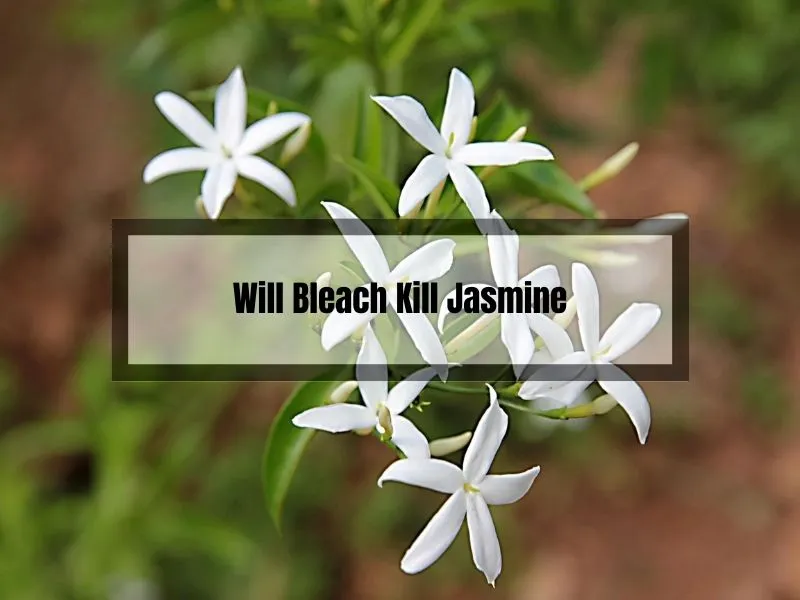
Will Bleach Kill Jasmine?
What happens if you accidentally spill bleach on your beloved jasmine plant? Will bleach kill jasmine? Unfortunately, the answer is yes.
Bleach is incredibly harsh and can cause severe damage to your beloved jasmine. If bleach comes into direct contact with the leaves and stems, it can cause discoloration, wilting, and even death in extreme cases. The harsh chemicals in bleach can also damage the soil, making it difficult for your jasmine to grow back.
If you accidentally spill bleach on your jasmine, it’s important to act quickly to minimize the damage. Here are some steps you can take:
- Rinse the plant with water: Use a hose or watering can to rinse your jasmine thoroughly with water. This will help to dilute the bleach and wash it away from the leaves and stems.
- Trim damaged leaves and stems: If your jasmine has already started to show signs of damage, it’s important to trim away any affected leaves and stems. This will help to prevent the damage from spreading to other parts of the plant.
- Treat the soil: If the bleach has seeped into the soil, it’s important to treat the soil to neutralize the chemicals. You can do this by adding activated charcoal or baking soda to the soil.
- Monitor the plant: Keep a close eye on your jasmine over the next few days and weeks. If you notice any further signs of damage, take action immediately to prevent the damage from spreading.
Effects of Bleach on Plants
Bleach is a powerful cleaning agent that can be found in many households. It is commonly used to clean and disinfect surfaces, but it can also be harmful to plants if not used correctly.
In this section, we will explore the effects of bleach on plants and how to use it safely.
How Does Bleach Affect Plants?
Bleach contains sodium hypochlorite, which is a highly alkaline chemical. When bleach comes into contact with plants, it can cause damage to the cell membranes and disrupt their natural processes. This can lead to discoloration, wilting, and even death in extreme cases.
Which Plants Are Most Sensitive to Bleach?
Not all plants are equally sensitive to bleach. Some plants are more resistant to chemicals than others.
However, plants with delicate leaves and thin stems are generally more susceptible to bleach damage. Examples of such plants include jasmine, roses, and other flowering plants.
How to Use Bleach Safely in Your Garden
If you need to use bleach in your garden, there are several precautions you should take to minimize the risk of damage to your plants:
- Dilute the bleach: Never use undiluted bleach on your plants. Instead, mix one part bleach with nine parts water to create a diluted solution.
- Apply the bleach carefully: Use a spray bottle to apply the bleach solution to the affected areas of your plants. Avoid getting the solution on the leaves or stems of your plants.
- Rinse the plants: After applying the bleach solution, rinse your plants thoroughly with clean water to remove any residual bleach.
- Use protective gear: Wear gloves, goggles, and a mask when handling bleach to protect yourself from its harmful effects.
- Dispose of bleach safely: Do not pour bleach down the drain or into your garden. Instead, dispose of it according to your local regulations.
By following these guidelines, you can safely use bleach in your garden without harming your plants. However, it is always best to avoid using bleach on your plants if possible and opt for natural alternatives instead.
Remember, bleach is a powerful chemical that can be harmful to both plants and humans if not used correctly. Always exercise caution and follow the instructions carefully when using bleach in your garden.
Alternative Methods for Jasmine Maintenance
Natural Remedies for Common Jasmine Problems
Jasmine plants can sometimes attract unwanted pests, but that doesn’t mean you should resort to harsh chemicals. There are plenty of natural pest control solutions you can use to keep your jasmine plants healthy and bug-free.
Neem oil, for example, is an organic and effective option for controlling various pests like aphids, spider mites, and whiteflies. You can also introduce beneficial insects like ladybugs and lacewings into your garden to help control pest populations naturally.
- Organic fertilizers for optimal growth
To keep your jasmine plants thriving, it’s essential to provide them with proper nutrition. Instead of using chemical fertilizers, opt for organic options like compost, worm castings, or fish emulsion.
These natural alternatives are better for your plants and the environment, ensuring that your jasmine plants grow strong and healthy.
Proper Pruning Techniques for Jasmine Plants
- Timing and frequency
Pruning is a crucial part of maintaining your jasmine plants, but it’s essential to do it right. Prune your jasmine plants in early spring or late winter before the new growth begins.
This helps promote vigorous growth and more abundant blossoms. Depending on the variety, you may need to prune your jasmine annually or every two to three years.
- Tools and best practices
When it comes to pruning your jasmine plants, it’s essential to use clean, sharp tools to avoid damaging the plant and spreading disease. Hand pruners or pruning shears work well for most jasmine varieties.
When pruning, focus on removing dead, diseased, or tangled branches. Additionally, trim back any overly vigorous growth to maintain the desired shape and size of your plant. Remember, a little patience and care go a long way in ensuring your jasmine plants flourish.
How to Revive a Bleach-Damaged Jasmine Plant
Assessing the Damage
- Identifying bleach-affected areas
If your jasmine plant has been exposed to bleach, it’s crucial to assess the damage as quickly as possible. Look for signs such as discolored, wilted, or dead leaves and stems.
The affected areas may appear white, yellow, or brown, depending on the severity of the damage.
- Determining the extent of harm
Once you’ve identified the bleach-affected areas, try to determine how severe the damage is. If only a small portion of the plant has been impacted, there’s a chance your jasmine can recover.
However, if the majority of the plant has been affected, it may be too late to save it.
Steps to Help your Jasmine Plant Recover
- Removing damaged parts
If your jasmine plant has suffered bleach damage, the first step in helping it recover is to remove the affected parts. Carefully trim away any discolored or wilted leaves, stems, and branches using clean, sharp pruning shears.
Be sure to remove any bleach-contaminated soil as well, to prevent further damage to the root system.
- Providing essential nutrients and care
After removing the damaged parts, it’s time to give your jasmine plant some extra TLC. Ensure that it’s receiving adequate water and provide it with an organic fertilizer to replenish any lost nutrients.
Additionally, be sure to monitor the plant closely for signs of improvement or further decline. With a little care and attention, your jasmine plant may recover and flourish once again.
Safe Alternatives to Bleach for Jasmine
While bleach can be an effective way to kill jasmine, it is not always the safest option.
Luckily, there are several alternatives that you can use to get rid of this plant without resorting to harsh chemicals. Here are some safe alternatives to bleach for jasmine:
1. Vinegar
Vinegar is a natural herbicide that can be used to kill jasmine. To use it, simply mix equal parts of vinegar and water in a spray bottle and apply it to the leaves and stems of the plant.
Be sure to saturate the plant thoroughly, as vinegar needs to come into contact with the plant’s roots to be effective.
2. Salt
Salt can also be used to kill jasmine. To use it, mix 1 cup of salt with 2 cups of water and apply it to the soil around the plant. Be careful not to get salt on any other plants, as it can also kill them.
3. Boiling Water
Boiling water is a simple and effective way to kill jasmine. Simply boil a pot of water and pour it over the plant’s roots. This will kill the plant by destroying its roots.
4. Corn Gluten Meal
Corn gluten meal is a natural herbicide that can be used to kill jasmine. Simply sprinkle it around the plant and water it in. It will prevent the plant from growing by inhibiting root development.
5. Manual Removal
If you don’t want to use any chemicals at all, manual removal is another option. Simply dig up the plant and its roots, making sure to remove as much of the root system as possible. This can be time-consuming, but it is the safest option.
Frequently Asked Questions (FAQs)
Can jasmine plants recover from bleach exposure?
Yes, jasmine plants can sometimes recover from bleach exposure, but it depends on the severity of the damage. If only a small portion of the plant has been affected, there’s a good chance it can bounce back with proper care. However, if the majority of the plant has been damaged, it may be too late to save it.
What other chemicals should I avoid using on my jasmine plants?
In addition to bleach, it’s essential to avoid using other harsh chemicals on your jasmine plants, such as ammonia or strong, synthetic fertilizers. These can cause similar damage to your plants, including burned leaves, stunted growth, and even death. Opt for natural and organic alternatives instead.
Are there any jasmine varieties that are more resistant to bleach?
There isn’t any specific jasmine variety known for being more resistant to bleach. All jasmine plants are susceptible to the harmful effects of bleach and other harsh chemicals. It’s always best to avoid using these substances on or around your plants.
Can I use a diluted bleach solution as a fungicide for my jasmine plants?
While diluted bleach solutions can be effective in treating some fungal issues, it’s not recommended for use on jasmine plants. The risk of damaging or killing your plant outweighs any potential benefits. Instead, consider using safer, natural alternatives like neem oil, baking soda, or copper-based fungicides to combat fungal problems.
Conclusion
So, there you have it! Bleach can indeed kill jasmine plants, causing severe damage to their leaves, stems, and root systems. It’s crucial to keep your jasmine plants protected from bleach exposure and opt for natural, organic alternatives when it comes to maintaining and caring for your beloved plants. By using natural pest control solutions, organic fertilizers, and proper pruning techniques, you can ensure that your jasmine plants remain healthy and vibrant.
If you do happen to encounter bleach damage on your jasmine plant, don’t lose hope. Assess the extent of the damage, remove affected parts, and provide essential nutrients and care. With a little patience and dedication, your jasmine plant may recover and continue to grace your garden with its enchanting fragrance and blossoms.
Related Posts:
- Will Vinegar Kill Jasmine? A Natural Solution to Control Asian Jasmine
- Will Roundup Kill Asiatic Jasmine? A Comprehensive Guide
- Is Night Blooming Jasmine Poisonous to Cats? A Comprehensive Guide
- Jasmine Trachelospermum Problems: Recognizing and Solving Common Issues
- Easy Ways to Propagate Jasmine Without Rooting Hormone



